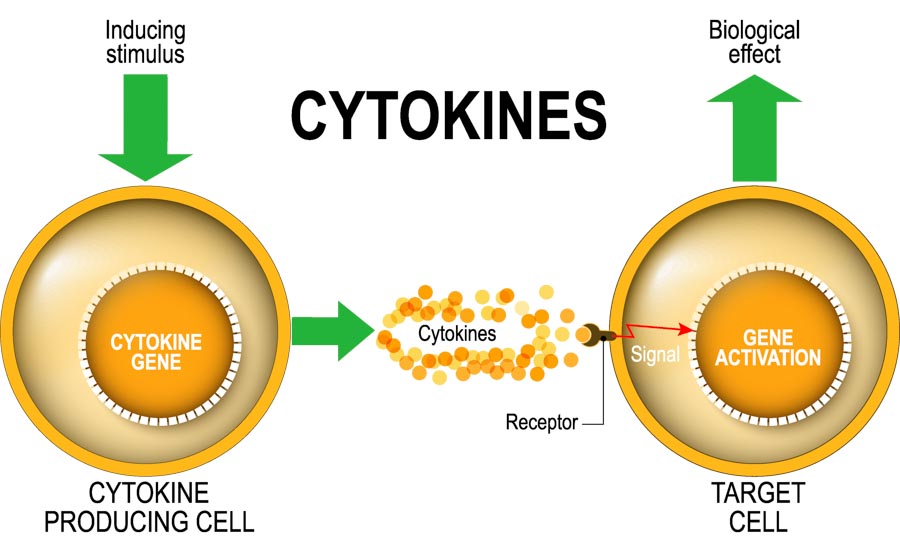
Harvard Medical School neuroscientists conclude that acupuncture regulates inflammation in response to bacterial infections. The study finds acupuncture effective in ameliorating the effects of pro-inflammatory cytokine storms. The researchers demonstrate that acupuncture increases survival rates and prevents disease progression.
Electroacupuncture was applied as a treatment modality for bacterial infections. Electroacupuncture successfully activated the vagus-adrenal axis in response to bacterial toxins, thereby regulating and enhancing expression of dopamine from adrenal chromaffin cells. As a result, animals in the experiment had significantly improved survival rates over controls. Animals receiving acupuncture after being infected had a 60% survival rate. Animals without acupuncture treatment had a 20% survival rate. Moreover, the activation of acupuncture’s anti-inflammatory effects were specific to certain acupuncture points at specific levels of electroacupuncture intensity.
The research team made another important finding. Acupuncture enhanced immune system function if applied prior to infection. As a result, electroacupuncture was effective in reducing adverse affects caused by subsequent infections. The prophylactic measures increased survival rates from 20% to 80%. Animals that did not receive acupuncture experienced significantly greater disease complications, inflammation, and mortality rates. Funding for the research was supplied, in part, by the US National Institutes of Health and the Harvard/MIT Grants Program in Basic Neuroscience.
The researchers demonstrated that acupuncture activates specific autonomic pathways and modulates systemic inflammation. The beneficial effects of acupuncture were shown to be acupoint specific. The therapeutic effects of acupuncture were also relevant to the level of electroacupuncture stimulation and the timing of acupuncture treatments. The researchers note, “we found that electroacupuncture stimulation (ES) drives sympathetic pathways in somatotopy- and intensity-dependent manners.” [1] They conclude that low intensity electroacupuncture to acupoints on the legs “drives the vagal-adrenal axis, producing anti-inflammatory effects that depend on NPY+ [neuropeptide Y] adrenal chromaffin cells.” [2] They add that high intensity electroacupuncture to abdominal acupoints “activates NPY+ splenic noradrenergic neurons via the spinal- sympathetic axis; these neurons engage incoherent feedforward regulatory loops via activation of distinct adrenergic receptors (ARs), and their ES-evoked activation produces either anti- or pro-inflammatory effects due to disease-state-dependent changes.” [3]
Acupoint Specificity
The researchers conclude that (after exposure to bacterial endotoxins) the anti-inflammatory effects from low intensity electroacupuncture stimulation are effective at acupoint ST36 (Zusanli) but not ST25 (Tianshu). Low intensity stimulation of ST36 successfully drives the vagal-adrenal axis.
The preventative medicine aspects of acupuncture were also tested. High intensity electroacupuncture at either acupoint ST25 (Tianshu) or ST36 drives the spinal-sympathetic axis and produces anti-inflammatory effects when electrostimulation is applied prior exposure to bacterial endotoxins. High intensity stimulation of ST25 suppresses splenic inflammation if applied prior to endotoxin exposure. However, low intensity stimulation of ST36 does not suppress splenic inflammation.
The researchers note that their findings indicate some level of support for traditional Chinese medicine principles. They note that the driving of specific somatosensory autonomic pathways by specific acupuncture points (which also varies according to the level of stimulation) has the potential to confirm the “neuroanatomical basis for the linking from somatic tissue stimulation to the modulation of internal organ physiology,” which is one foundation of traditional Chinese medicine acupuncture channel and acupoint theory. [4]
This is supported by the data in the research. For example, the anti-inflammatory effects caused by low intensity electroacupuncture stimulation of ST36 “operates via activation of the D1 dopamine receptor, but not β2 ARs [adrenergic receptors] in response to catecholamines released from the adrenal gland.” [5] By contrast, the spinal-sympathetic anti-inflammatory effects caused by stimulation of high intensity electroacupuncture at ST25 has the opposite operational axis. It depends on β2 ARs but not D1 dopamine receptors. The researchers add that the “differential somatotopic organization and intensity dependence in driving these autonomic pathways could explain variable degrees of vagal nerve dependence in modulating systemic inflammation by acupuncture.” [6]
The researchers note that prior to endotoxin exposure, low or high intensity electroacupuncture at ST36 and high intensity electroacupuncture at ST25 produces anti-inflammatory effects. However, for the treatment of preexisting severe systemic inflammation, low intensity electroacupuncture is effective and high intensity is not, unless pharmacologic blocking of beta-2 adrenergic receptors is applied. The researchers conclude, “the revelation of somatotopic organization and intensity dependence in driving distinct autonomic pathways could help to optimize stimulation parameters and improve both efficacy and safety in using acupuncture to treat systemic inflammation.” [7]
The Research Team
The research team was from the Dana-Farber Cancer Institute and Department of Neurobiology at Harvard Medical School (Boston, Massachusetts), the Institute of Acupuncture and Moxibustion (Fudan Institutes of Integrative Medicine), School of Basic Medical Science (Institutes of Brain Science, Fudan), China Academy of Chinese Medical Sciences, Memory Brain Research Center and Department of Neuroscience (Baylor College of Medicine, Houston, Texas), and the McNair Medical Institute (Houston, Texas).
Reference:
1–7. Liu, Shenbin, Zhi-Fu Wang, Yang-Shuai Su, Russell S. Ray, Xiang-Hong Jing, Yan-Qing Wang, and Qiufu Ma. "Somatotopic Organization and Intensity Dependence in Driving Distinct NPY-Expressing Sympathetic Pathways by Electroacupuncture." Neuron (2020).


